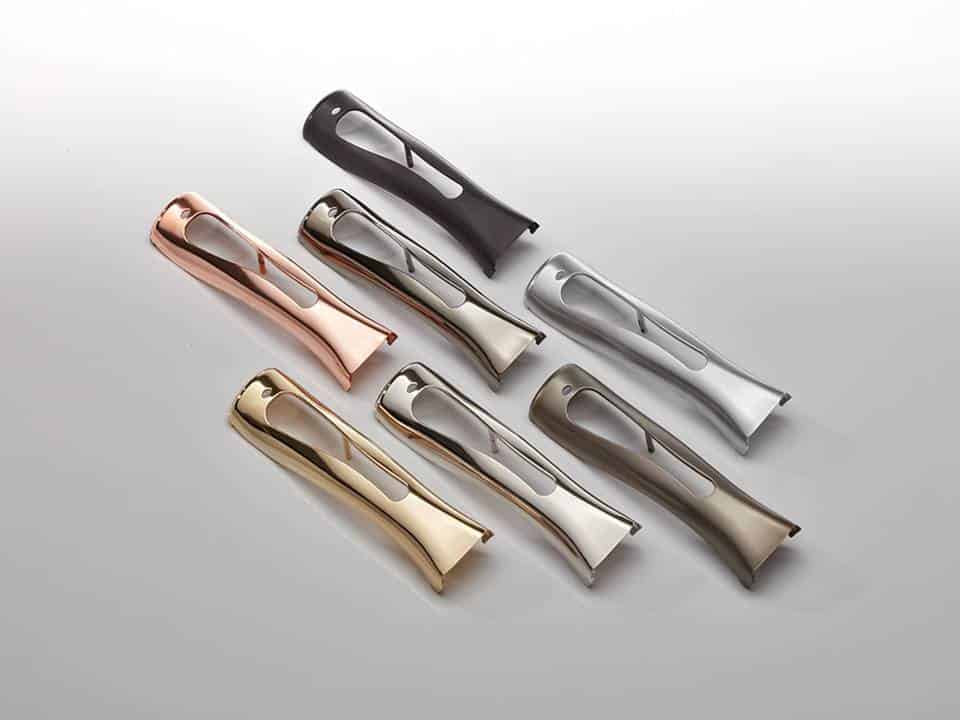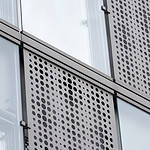Plating is a very common industrial process where the surface of a material is treated by applying a very thin coating of a different material. The plating process can either protect the surface against corrosion or give it a decorative finish.
Through the years, an increasing range of plating processes have become available, and the choice of method depends upon the customer’s requirements. It is possible to plate a range of metals, particularly copper, silver, gold, nickel, zinc, and tin, onto almost any substrate. It is often desirable to plate a cosmetic finish onto a plastic.
Here we will discuss how to make plastic look like metal with the help of electroplating.
Electroplating on plastic components:
Nowadays, it has become a common practice for electroplating plastic to look like metals. Manufacturers use this method on plastic injection molded parts to make them more robust.
This process can be used to provide a decorative finish, as well as to improve the durability and corrosion resistance of the component.
The electroplating process involves passing an electric current through a solution containing a metal salt. The metal ions in the salt are attracted to the positively charged electrode and coat the surface of the component.
There are a number of different metals that can be used in the electroplating process, including copper, nickel, and chromium. The metal that is used will depend on the desired properties of the finished component.
The electroplating process can be used to coat a wide range of different types of plastic, including ABS, polycarbonate, and PVC. The process is typically carried out at room temperature, and the component can be immersed in the solution for a period of time to ensure a uniform coating.
The benefits of plating on plastic:
The growing number of applications where metals and metallic surfaces are used has increased the demand for plating on these materials. It is therefore often chosen when a high level of decoration is required.
The use of plastic electroplating in the manufacturing industry has become increasingly popular in recent years. This is due to the many benefits that it offers over traditional methods of manufacturing.
Plastic electroplating is a process where a thin layer of metal is deposited onto a plastic surface. This can be done using a variety of methods, but the most common is through the use of an electrolytic cell.
Electroplating plastics have many other physical advantages. Such as:
Plating on plastic can protect a surface from corrosion and help keep it clean.
- Low and stable electrical conductivity: As well as increasing their chemical and mechanical durability, electroplated parts can also help improve their electrical conductivity, which means they’re less likely to be affected by external factors.
- Electroplated parts are stronger than non-electroplated parts. They’re often used to increase the longevity of parts by adding extra protection against rusting.
- Electroplated plastics can increase their electrical conduction properties, which makes them useful for manufacturing electronics. They can also protect plastic substrates from harmful UV rays and gas attacks. Finally, they can help dissipate heat better than uncoated plastics.
- Electronic devices emit electromagnetic radiation (EMR). To prevent this from interfering with nearby electronic devices, they’re often shielded by an outer shell made of metal.
The application of plastic electroplating:
The automotive industry is one of the most common industries that use plastic plating. Car parts that are subject to high levels of wear and tear, such as brake pads and engine parts, often benefit from this type of plating. The process can also be used to improve the appearance of car parts.
The electronic industry also relies heavily on plastic plating. The process is often used to coat the printed circuit boards that are used in electronic devices. This type of plating provides a durable surface that is resistant to corrosion and wear.
The medical industry is another major user of plastic plating. Medical devices that are subject to high levels of wear and tear, such as stents and pacemakers, often benefit from this type of plating. The process can also be used to improve the appearance of medical devices.
Many other industries use plastic plating for different products. Such as:
- Heat-resistant products.
- Radio transmission products
- Hygienic products
- Household products
- Apparel
- Bottle caps
- Bar fittings
Conclusion:
If you are looking to create a metal look on plastic components, electroplating is an excellent way to achieve it. However, before you start plating plastic, you need to make sure that the plastic is properly prepared and ready for the process. This means that you will need to remove any oils or other impurities from the surface of the plastic so that the metal will stick to it. Rapid direct have a team of skilled engineers ready to support you in your product development journey from prototyping to production. You can also get help from experts of Rapid direct in this process for better results. Once all of your preparations are made, it’s time for the fun part: plating!






